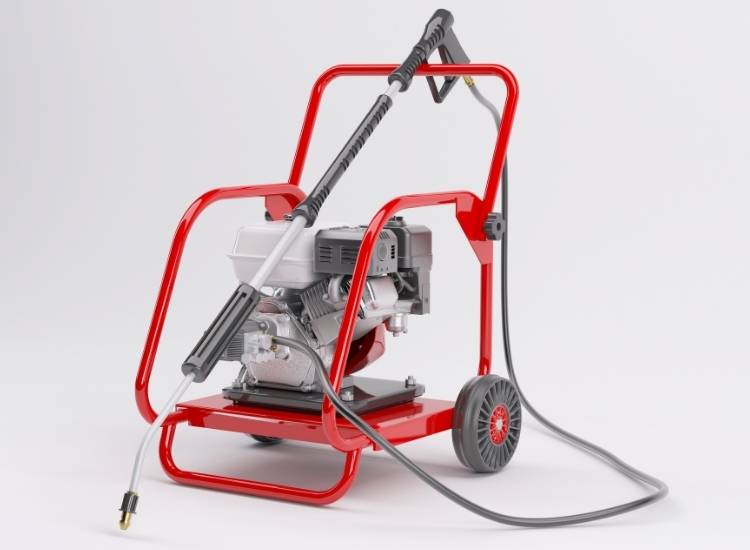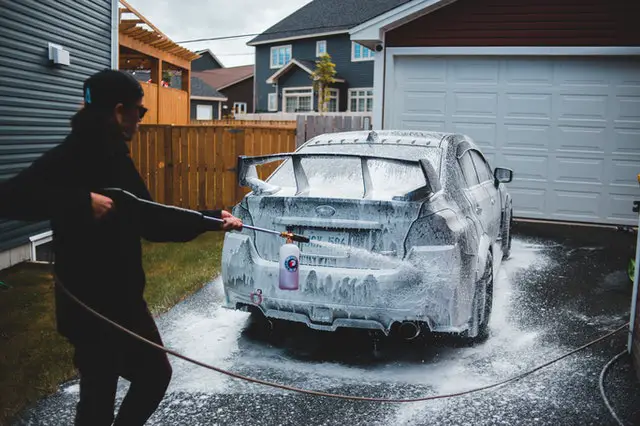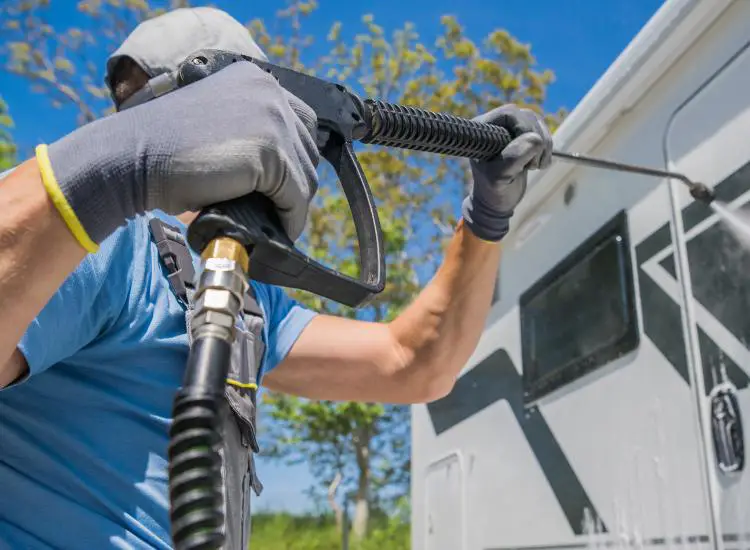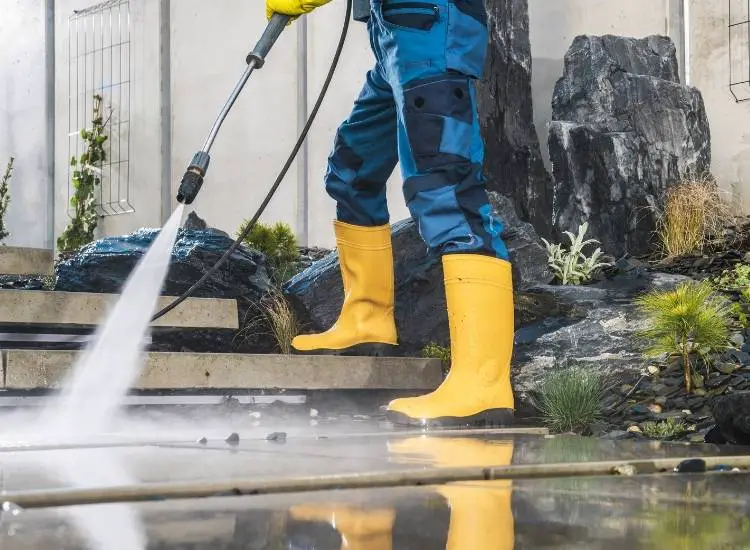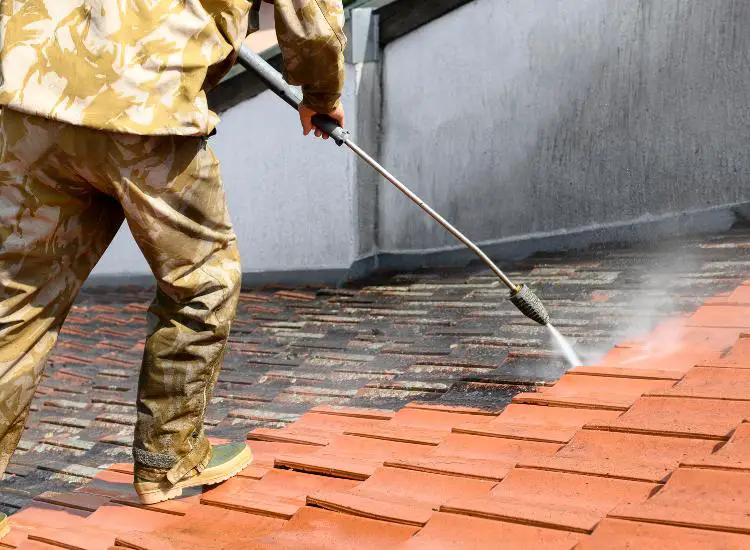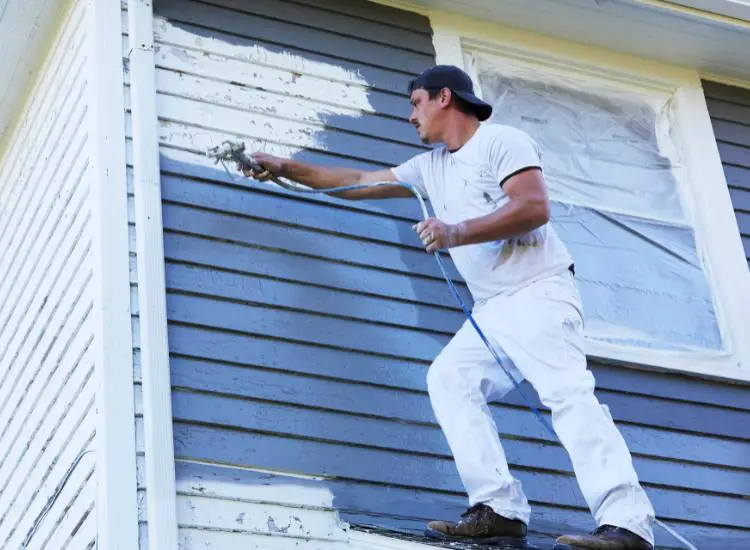Can you Pressure Wash Stucco?
Both gasoline and electric pressure washers can pack some serious power. These machines can remove paint, mold and mildew. But can you pressure wash stucco and other fragile surfaces around your house?
It’s completely safe to pressure wash stucco, if you’re using the correct attachment. A 0-degree nozzle will be too aggressive and could damage the surface. But a 40-degree nozzle is perfectly safe for cleaning stucco siding.
What is Stucco?

Stucco is a material made of cement, sand, lime, and water. In construction stucco is applied wet, before hardening to a dense solid.
It can be used on exterior walls of a structure, or as a decorative coating for interior walls and ceilings. Stucco is known for its durability and can last up to 50 years with very little maintenance.
But don’t start celebrating just yet. It’s still a good idea to clean it on a regular basis. That’s where a pressure washer comes in handy.
Factors to Consider
There’s a few things to keep in mind before you pull out that pressure washer and go to town. Inspecting the overall condition of your house and using the right equipment will make the job much safer.
Is the Stucco in Good Condition?
There are many benefits to having a home, garage, or wall made from stucco. But the truth is all household materials are prone to failure over time.
Stucco that is bubbling, cracking, or blistering could mean there’s a much bigger problem. If your stucco house is in bad condition, there could be water damage hidden beneath the surface.
This is not the fault of the painter, but instead caused by faulty stucco installation. If your home is showing any of these signs, have it looked at by a professional.
Using the Correct Nozzle
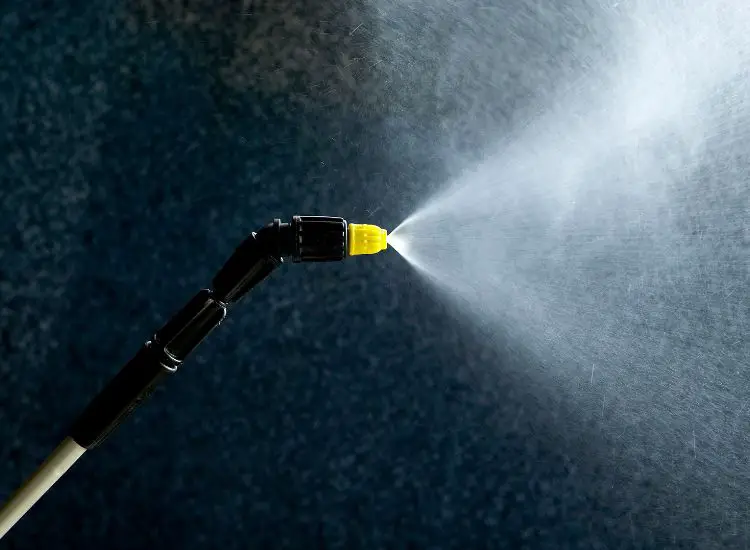
0-degree (Red) – This delivers the most amount of water pressure to a concentrated area. It should only be used to clean off tough concrete stains. The red nozzle will cut through wood, home siding and other soft materials.
15-degree (Yellow) – Can be used like a scraper to strip off paint, or grease on hard exterior surfaces. The yellow nozzle can also work to clean second story floors from the ground level, as the water pressure will decrease with distance.
25-degree (Green) – Ideal for cleaning dirt, grime, and mildew on exterior surfaces. The green nozzle is safe enough to clean home siding, sidewalks, and metal furniture. It will deliver plenty of cleaning power without causing any damage.
40-degree (White) – Creates a wide spray that allows you to clean windows, vehicles, and other objects around the home. The white nozzle has more cleaning power than a traditional garden hose but is still safe on those delicate surfaces.
Detergent (Black) – Some pressure washers come with an attached canister that holds soap. The black detergent nozzle has the capability to evenly spread out soap when in use. This is also a low-pressure nozzle and is considered safe.
How to Pressure Wash Stucco
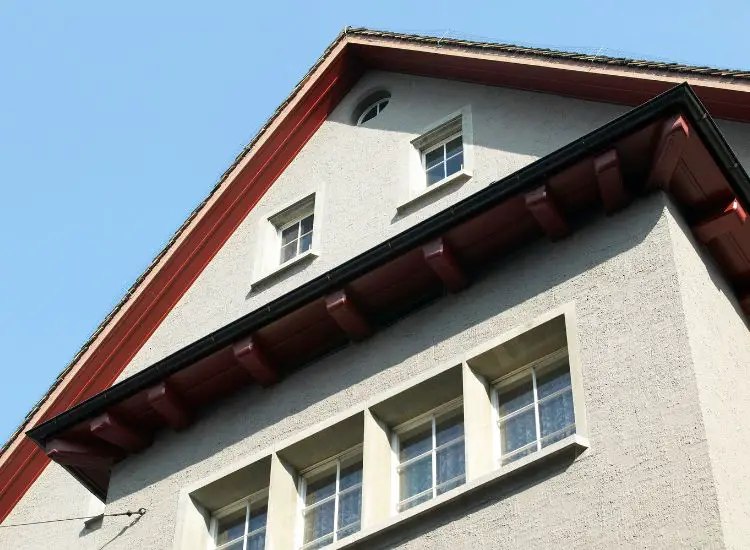
Now that you know what key factors to look out for, let’s talk about how to clean stucco. The most important thing to remember is to take your time, as this will guarantee the best results.
1. Prepare the Area
It’s critical to prepare your work area before washing. You will need to examine the house for any electrical outlets, or exposed wiring.
These will need to be covered, so you can avoid causing any damage from water. You will also need to close and lock all the windows inside the house.
Doing this will provide a better seal, which will prevent any water from getting in. Lastly, don’t forget to move any tools, toys, and sticks around the perimeter of the house.
2. Start at the Top
Whether you’re washing a stucco house or wall, it’s important to start at the top. Gravity will work to pull all that dirty water down to the ground.
If you start at the bottom and work your way up, dirty water will run back over that freshly cleaned stucco. For second story cleaning, a 15-degree pressure washer nozzle will be most effective.
These areas are higher up, which means you won’t be able to get that close to them. As a result, you will need a tighter stream to properly wash areas that are further away.
3. Follow a Pattern
Consistency is key when pressure washing stucco. If you have an extremely dirty surface, it will be obvious to see what areas have been cleaned.
But this can work against you, which is why it’s smart to follow a spray pattern when washing. Begin by spraying the surface with vertical lines, before following up with horizontal lines.
This will guarantee that all areas have been cleaned and you won’t miss anything. It also helps to avoid ugly overspray lines that develop from rushing the job.
4. Experiment with Different Attachments
Above we mentioned how a 15-degree nozzle works best for second story cleaning. However, this is just a general rule, and you might find another nozzle to work better.
That’s why you should always experiment with different attachments. Some stucco surfaces might be in decent condition and they only need a light wash.
If that’s the case, a 40-degree nozzle will do the trick. But if you’re working with a very dirty surface, you need to safely apply more pressure, without causing any damage.
Should You Pressure Wash Stucco before Painting?
Better results – Pressure washing stucco with a less aggressive nozzle will make your paint job look so much better.
This method removes surface dirt, so the paint will have more material to stick to. Even though it will add more time to complete the job, the results will be so much better.
Lasts longer – This benefit relates to what we just talked about. When you rush through a job, it simply won’t last as long.
There’s no point in skipping the pre-wash stage before painting, if the finished product won’t last. It will cause more work for you in the future because the stucco will need to be re-painted.
How do You Clean Stucco without Damaging it?
There are several ways to clean stucco without damaging it:
- Pressure washing: Use a pressure washer with a low-pressure setting to clean the stucco. Make sure to keep the nozzle at least 12 inches away from the surface to avoid causing damage.
- Soft washing: Soft washing is a gentler alternative to pressure washing. It involves using a cleaning solution and a low-pressure sprayer to clean the stucco. This method is particularly useful for removing stains and discoloration.
- Scrubbing: For smaller areas or stubborn stains, you can use a soft-bristled brush and a mild detergent to scrub the surface. Rinse thoroughly with water after scrubbing.
- Chemical cleaners: There are several chemical cleaners available that are specifically designed for cleaning stucco. Make sure to follow the manufacturer’s instructions carefully and wear protective gear, such as gloves and goggles.
Regardless of the cleaning method you choose, always test a small, inconspicuous area first to make sure that it doesn’t damage the stucco.
Soft Washing vs Pressure Washing
People often say that soft washing stucco is better than using a pressure washer. But what’s the difference between the two?
Soft washing uses much less pressure and is generally safer on surfaces that can be easily damaged (like stucco).
Soft washers have around 100 psi of water pressure, which is roughly three times the amount of a standard garden hose.
Soft Washing Uses Less Pressure
With this amount of pressure, there’s no risk of damaging stucco, or other fragile materials on your house.
Soft washers also have a unique combination of chemicals that work to remove mold and mildew.
Chlorine and fungicide are mixed to clean siding, roofs, and other surfaces. This mixture needs to sit for a few minutes, before being rinsed off with water.
Final Thoughts
Stucco siding is one of the most popular materials that can be found on homes. For a good reason too. It’s durable, easy to clean, and has a nice curb appeal.
But it needs to be maintained correctly if you want the best looking results.
Next time you plan on pressure washing your house keep two things in mind. The general condition of the stucco and using the correct nozzle attachments.
These tips will help you clean your house in the safest way possible, so you can avoid future problems.
Search Terms
- Can you pressure wash stucco?
- How to pressure wash stucco

